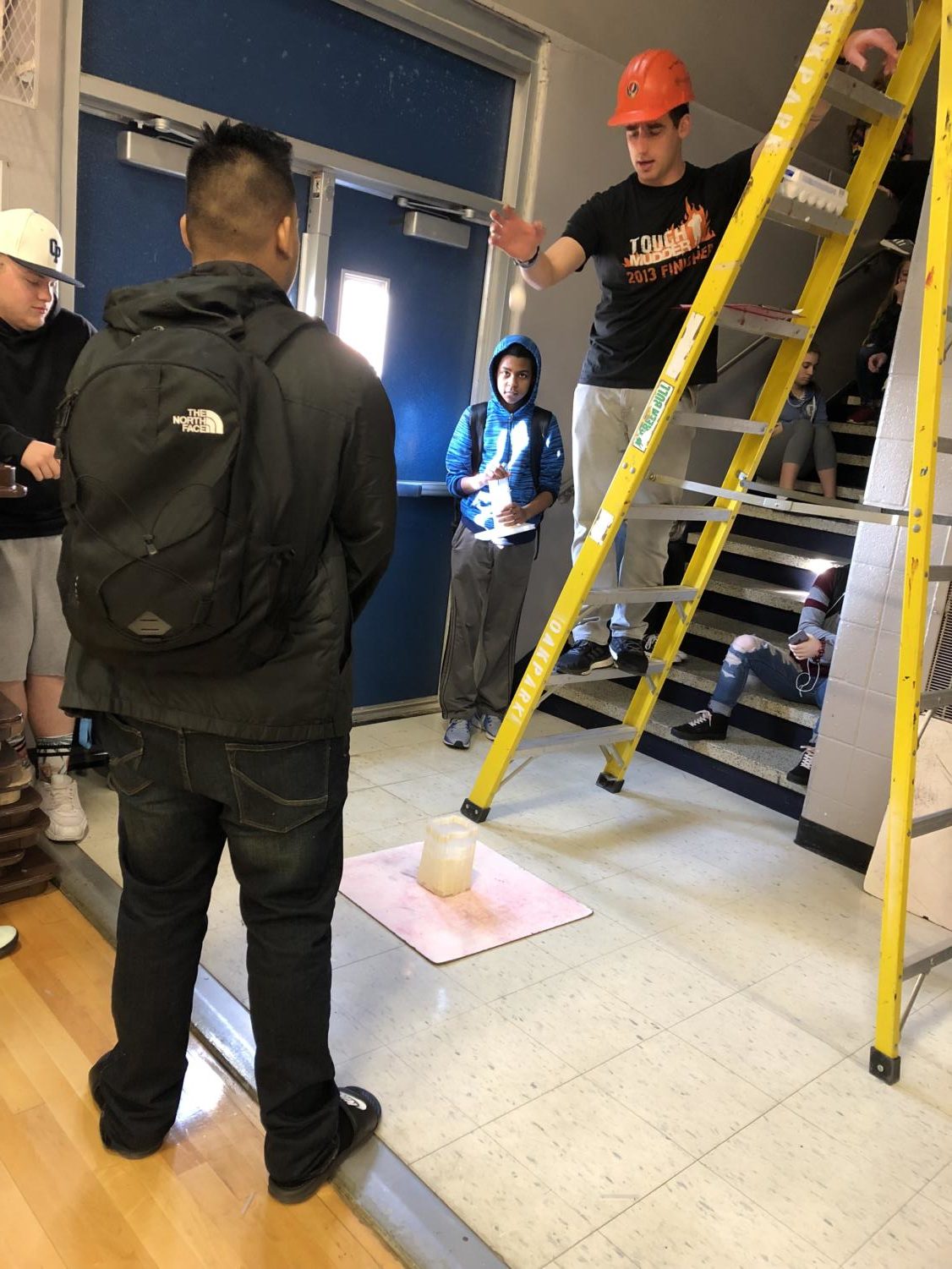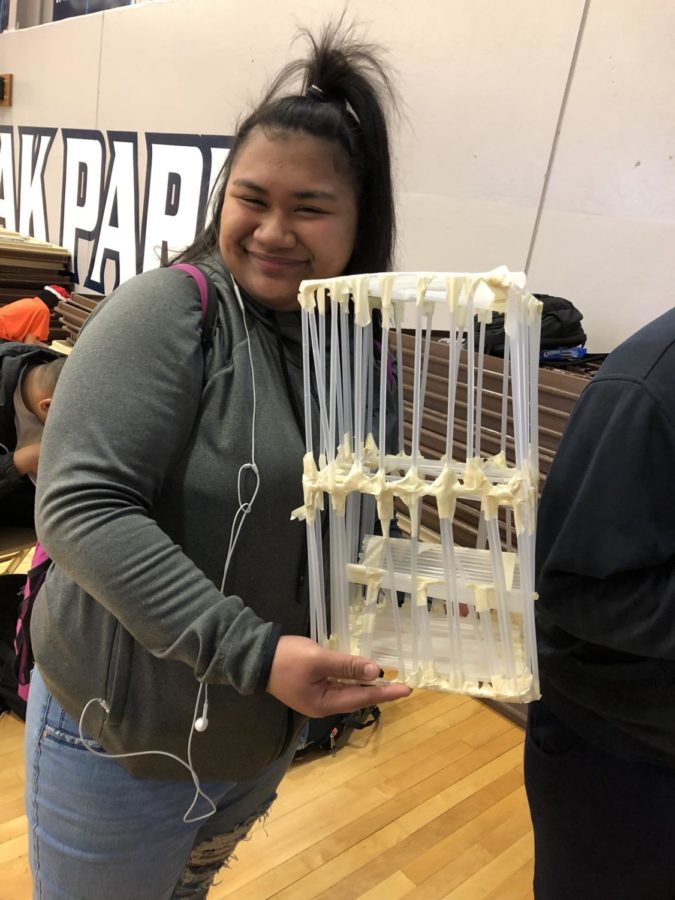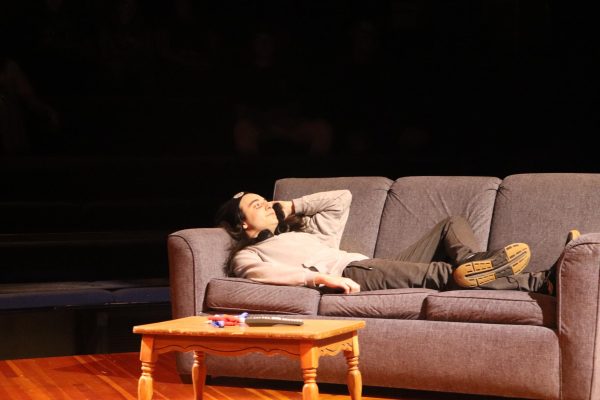Physics is Egg-citing
Students experiment with a breakfast food in science class
Every spring physics classes get to show off their knowledge of physics in the Oak Park gym, dropping eggs. McSparin’s and Whited’s physics students have been working to build a structure that would protect the eggs from breaking for two weeks.
“You’re building a structure. You get masking tape and 250 straws. And you build a structure that has good protection so when you drop your egg it doesn’t bounce out or break,” freshman Nyla Dice said.
The experiment is a good way of getting students more involved in their learning. As the experiments begun, students huddled around and yelled as they watched eggs come down. They were able to learn while having fun.
“[We were learning] force and how we could apply our limited materials to make a good enough cushion for the egg. The higher it is [the egg drop] the more force it has,” freshman Jaya Deherrara said.
This experiment counts as a grade for students. It starts off at dropping the egg at six feet. If the egg breaks from the six-foot drop, then the students receive a 60%. If the egg drops at seven-feet, the students receive a 70%, and so on.
 The students didn’t get to practice with real eggs. In class, they were given plastic eggs with weights in them. They had little to no idea what to expect when they used real eggs.
The students didn’t get to practice with real eggs. In class, they were given plastic eggs with weights in them. They had little to no idea what to expect when they used real eggs.
“It [the experiment] was stressful because we tested it first try, and it didn’t work. We had to add more elements to it so it wouldn’t break,” freshman Charnel Villegas said.
On average 2-3 groups per class didn’t break a single egg, and received 100%’s. Even if a group’s egg did break, it was followed with laughter. No matter how a group did, they all learned something new.






